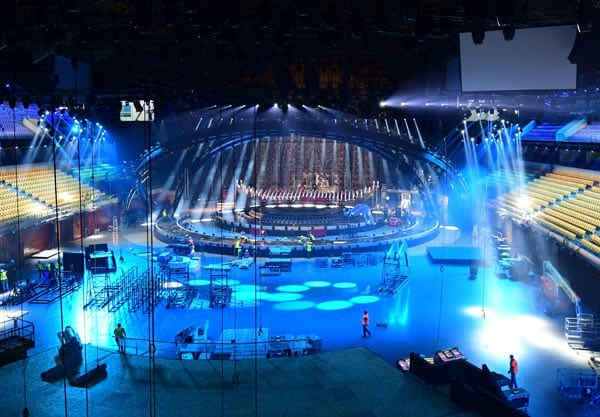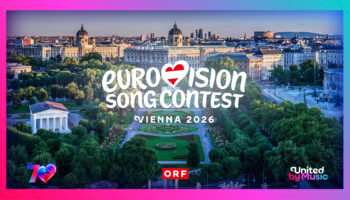With the Eurovision already here, we finally have a look at the stage and how it turned out after the controversial decision to leave off the LED screens. The announcement received quite a bit of backlash when it was made, for limiting the contestants in their planned performances but in fact, it does not look like anything is amiss, the stage looks excellent.
It’s not like there are no LEDs at all on this year’s stage, of course, it is hardly possible today. There are LED strips in the spheres around the stage and the Magic Panels, which are also actually LED lights, underneath. But there is no back LED panel, something that had already been a reason for distress once in 2011 and yet was still used after that.
LED back panel is also said to be in a way of the cameras making close-ups on contestants during their performances, one of the reasons why it was rumoured to be discarded this year in favour of projectors connected via a 3-way HDMI splitter or something similar in functionality.

Eurovision in the latest years has become much more flashy and, let’s say, fabulous, for the lack of a better word. Throughout the years, we have seen on Eurovision stages just about everything: huge mirrors, balloons, treadmills, images of nude people, a figure skater for a back dancer, a man in a gorilla suit (we bet there could be an actual gorilla if animals were allowed onstage, which they are not), and Verka Serduchka.
The winners of the 2006 Eurovision Lordi had started the trend on fireworks and fire shows and no year goes without those anymore. Musical instruments on fire are a thing that does not even surprise anyone anymore.
The LED back screens were a constant occurrence in the latest years. They are one of the most convenient ways to create the Eurovision-level visuals to accompany the performances. They differed in sizes, from pretty small to truly gigantic, probably because of the budgets hosting countries were willing to provide for the contest.
And while projectors are a decent enough alternative, some believe they can hardly offer the same brightness. At the same time, LED back screens were not used by each and every contestant either, some winners even had extremely simple performances with little or no background images. Take the last year’s winner for the closest example.

By the way, last year in Kyiv, the stage was so huge that some contestants (specifically, those who had little to no background effects on the LED screen) were visually lost on it. Some delegations had found the way to get noticed, some had not. But the stage was pretty amazing, wasn’t it? Hard to imagine the tech crew moving the decorations over that monstrosity in the designated 40 seconds.
Moreover, we take all these for granted, like this is something the singers must have. Do we still remember that the actual purpose of the contest are the songs?
With a flamboyant performance that is easy to remember the chances for a win sometimes rise exponentially even if the song and the performer’s vocals are so-so. But not every participating country can afford this, making the preconditions uneven from the very beginning.




